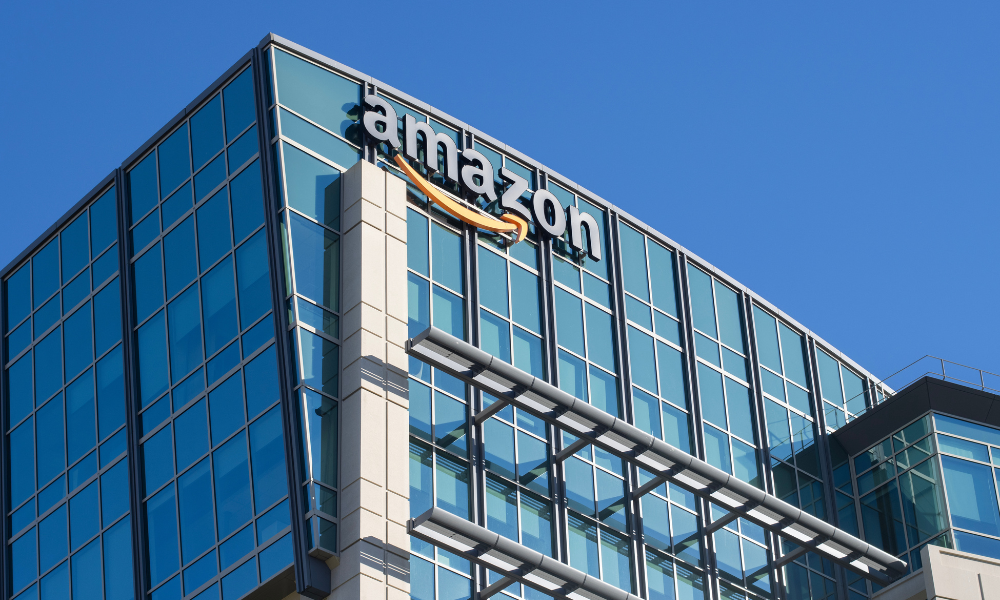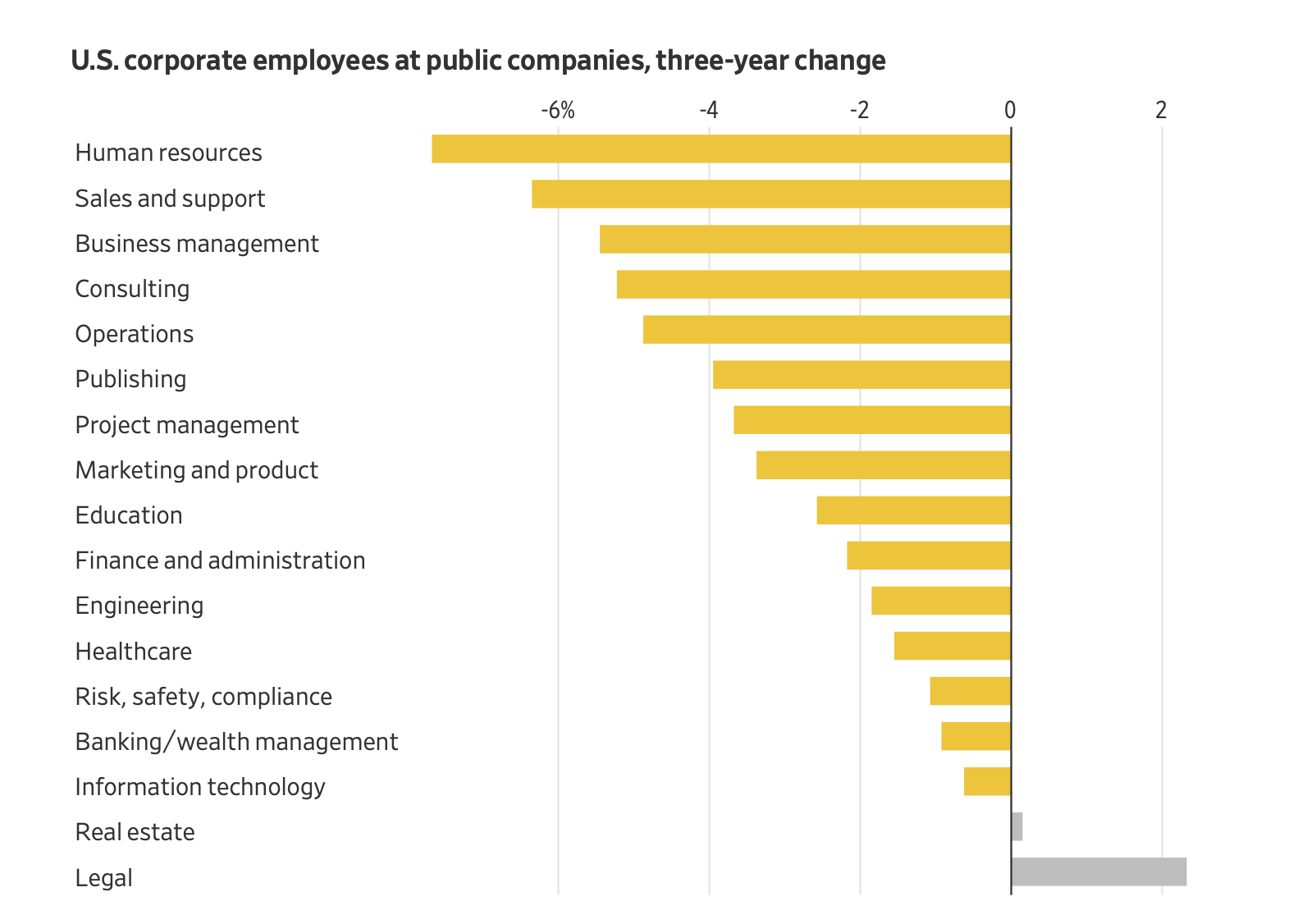
‘The best leaders get the most done with the least number of resources required to do the job,’ says Amazon CEO

Across the United States, major corporations are trimming their workforces—not just to cut costs but to move faster and leaner. From tech giants to household-name banks, companies are betting that smaller teams are more effective in the modern economy, according to the Wall Street Journal.
U.S. public firms have collectively reduced their white-collar headcounts by 3.5% over the past three years, according to data from Live Data Technologies. Over the past decade, around 20% of companies listed on the S&P 500 have shrunk their employee base. The shift reflects a new way of thinking: where growing the team once symbolized success, it now suggests inefficiency.
Tools like generative AI have accelerated this mindset, enabling fewer people to achieve more, according to the Wall Street Journal. From Amazon to Bank of America, leaders are voicing concerns that excess staffing slows progress. The current message? Remaining employees should be working at full tilt.
In a recent message to Amazon staff, CEO Andy Jassy acknowledged that AI's rapid evolution will reduce the need for certain roles. Earlier, he emphasized that not every new project requires a large team, noting, “The best leaders get the most done with the least number of resources required to do the job.”
Procter & Gamble recently revealed it’s eliminating 7,000 positions—15% of its corporate workforce—to create “broader roles and smaller teams.” Meanwhile, Estée Lauder and Match Group have each cut around 20% of their managerial ranks, according to the Wall Street Journal.
At Hewlett Packard Enterprise, finance chief Marie Myers told investors, “Flatter is faster,” highlighting that HPE now operates with under 59,000 employees—its lowest since becoming an independent firm a decade ago.
These reductions mark a departure from the traditional boom-bust employment cycle, according to the Journal. Companies are scaling down even as profits soar. The Federal Reserve Bank of St. Louis reported record-high corporate profits at the close of last year.
Jason Lemkin, a tech investor and former Adobe executive, recently commented, “Everyone with 500 employees and up that I talk to, off the record, including public companies, says, ‘I don’t need 30% to 40% of my team.’”
A Wall Street Journal analysis found that one in five S&P 500 companies now employ fewer staff—both on the ground and in offices—than they did ten years ago. The drop isn’t solely due to divestitures; major firms like Walmart, General Motors, and Bank of America have grown revenues even as headcounts fell.
While overall U.S. employment has risen, driven by sectors like healthcare and government, white-collar professionals have lost bargaining power since the pandemic’s peak. Despite looming talent shortages, layoffs and restructured teams are now common.

“Employees are too nervous to make moves,” noted Mischa Fisher, economist at Udemy, in the report. “This freeze is blocking normal opportunity flow—early career workers can’t break in, experienced workers can’t move up, and burned-out employees stay put.”
Between May 2022 and May 2025, managerial roles declined by 6.1%, while executive positions shrank by 4.6%. Nonmanagerial staff reductions also occurred.
Bank of America, under CEO Brian Moynihan since 2010, now has roughly 213,000 employees—down from 285,000—yet its revenues are up 18% over the same period. The bank has streamlined operations and slashed management layers from 13 to seven, according to the Wall Street Journal.
“We have a higher-producing company with fewer people and lower costs,” Moynihan said in April.
With organizational flattening, managers now oversee more people, said the report. In 2020, they had an average of 4.2 direct reports. By 2023, that number had climbed to 5.1, according to HR software firm Lattice.
But the downsizing may have gone too far. “They have delayered to the point of making the companies anorexic,” warned Harvard professor Joseph Fuller, in the report. “Their ability to do deep work and really focus goes down consistently because they’re endlessly distracted and now they’re doing the work that three people did 10 years ago.”
As firms tighten staffing, productivity per employee is again in the spotlight, said the Journal. Grindr’s CEO George Arison shared that under his leadership, the company’s revenue per employee doubled. “I was pretty clear that people are not working as much as they need to,” he said.
Moderna’s CEO Stéphane Bancel added pressure to his teams too, stating, “We’re going to launch 10 products... The challenge I have for our team is: How do we launch those 10 products without adding head count?”
AI continues to reshape these conversations, according to the Wall Street Journal. Shopify and Duolingo have both instituted hiring policies that now require justification that a job can’t be automated before a new hire is made. Duolingo’s CEO later clarified the company isn’t slowing hiring after public backlash.
At Lattice, plans to build a payroll solution initially suggested hiring 40–50 employees. But thanks to generative AI, fewer than 10 were added, said the report. CEO Sarah Franklin said the latest models can process nuanced requests: “That’s what we as humans do.”
More companies are also leveraging AI agents—automated systems that can make decisions. Walmart, for example, is using them to reduce in-house apparel production timelines by up to 18 weeks. Over the past decade, Walmart’s workforce has declined by 100,000, yet sales rose 40% to $681 billion in 2024, according to the Wall Street Journal.
“Many of today’s jobs didn’t exist just a few years ago, and we expect the pace of change to continue,” noted Donna Morris, Walmart’s chief people officer.
Amazon is on a similar path. In his latest note to staff, Jassy said in the report that the company is developing over 1,000 AI agents to help streamline operations: “Agents will allow us to start almost everything from a more advanced starting point,” he said.
Even small companies are embracing the lean model. Jolie, a luxury showerhead brand, expects to earn $50 million in annual revenue with just five employees, according to the Wall Street Journal. CEO Ryan Babenzien attributes this to tech efficiencies and strategic outsourcing.
“Hiring is not necessary like it used to be,” he explained. “Ten years ago, it would be really difficult to build a $50 million business with five or less people. Today, I think it’s going to be really, really common.”
He envisions growing the company to $100 million in revenue with just two additional hires.